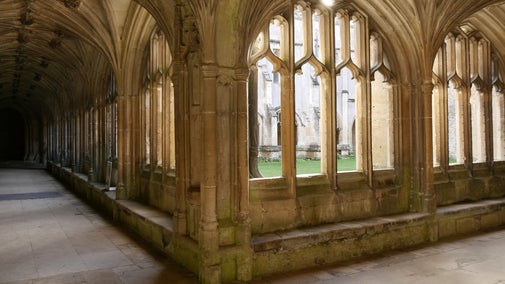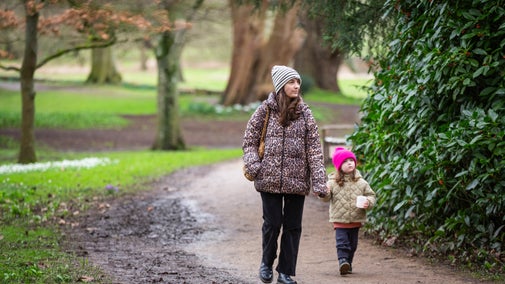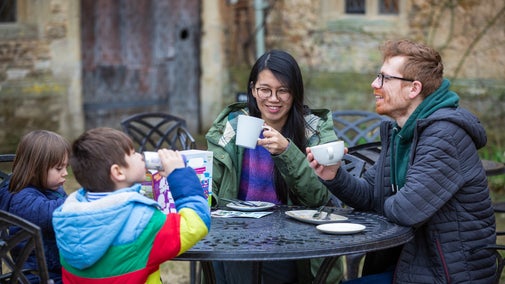
What's on at Lacock Abbey and Fox Talbot Museum
From guided tours to exhibitions, family trails and Christmas lights, see what's coming up at Lacock Abbey and Fox Talbot Museum.

Discover the important contributions made to early photography by a former resident of Lacock, William Henry Fox Talbot. The museum celebrates his world-changing breakthroughs in photography and hosts a changing programme of photography exhibitions.
One man’s scientific curiosity changed the way we see the world, forever. William Henry Fox Talbot was a polymath whose interests ranged across chemistry, botany, astronomy and mathematics, and a pioneer of Victorian photography.
Born in 1800, he was only five months old when he inherited Lacock Abbey. In 1835, he created the earliest surviving photographic negative, taken of a small window in the abbey’s South Gallery.
In the early 19th century, images could only be created through the medium of painting and drawing. Frustrated by his lack of artistic ability, William Henry Fox Talbot began searching for a way to 'fix images'.
After some experiments Talbot took an image of a window at his home, Lacock Abbey, in 1835. This image, not much bigger than a postage stamp, is now celebrated as the world’s earliest surviving photographic negative.
Talbot notes that, 'When first made, the squares of glass about 200 in number could be counted'.
This tells us that when the image was first taken it was clear enough to be able to count all the individual panes of glass that make up the window. This window has not changed and can still be seen today inside the Abbey today.

The Fox Talbot Museum is housed in a 16th-century barn once used as stables. It tells the story of the birth of photography with objects and technology from the early years of photography.
Through the museum, go back in time to see Fox Talbot's small mousetrap camera. Discover how photography developed and the chemistry behind Talbot's process. Find out how two men entered into a race to claim the title of 'inventor of photography'.
May 2025 brings an exhibition of previously unseen works by Magnum photographer Werner Bischof to Lacock’s Fox Talbot Museum, in collaboration with Magnum Photos. An early adopter of colour photography through his use of the Devin Tri-Color camera, Unseen Colour brings the photojournalist’s re-discovered colour work to UK audiences for the first time. Runs until May 2026, included in the cost of general admission.

From guided tours to exhibitions, family trails and Christmas lights, see what's coming up at Lacock Abbey and Fox Talbot Museum.
In its 800 years of history, Lacock has been an Augustinian abbey, a Tudor family home, a birthplace of photography, and a film and TV location.

Three prized items in the collection at Lacock have been included in a special National Trust publication. Discover why they are so unique and where you can find them.

Lacock Abbey's peaceful garden is a place to relax. Discover the Botanic Garden, greenhouse, orchard and woodland along with the sounds of nature at this green natural setting.

Explore the historic streets of Lacock, a quintessential English village with timber-framed cottages and local shops. With its central grid of four streets, Lacock today looks much as it did 200 years ago.

The Stables café and Courtyard Tea-rooms are ready to welcome you for refreshments, while the High Street Shop stocks a wide range of gifts and souvenirs.

Seasonal blooms, activity trails, medieval architecture and photographic discovery: have a fun-filled adventure at Lacock Abbey. Watch the gardens change with the seasons and autumn colour come to life in the Woodland, and discover the nature and enjoy crafts and trail activities in October half term. Explore the abbey rooms and discover the window with a unique link to the invention of photography, find out more in the Fox Talbot Museum and feel inspired by the latest exhibition.
